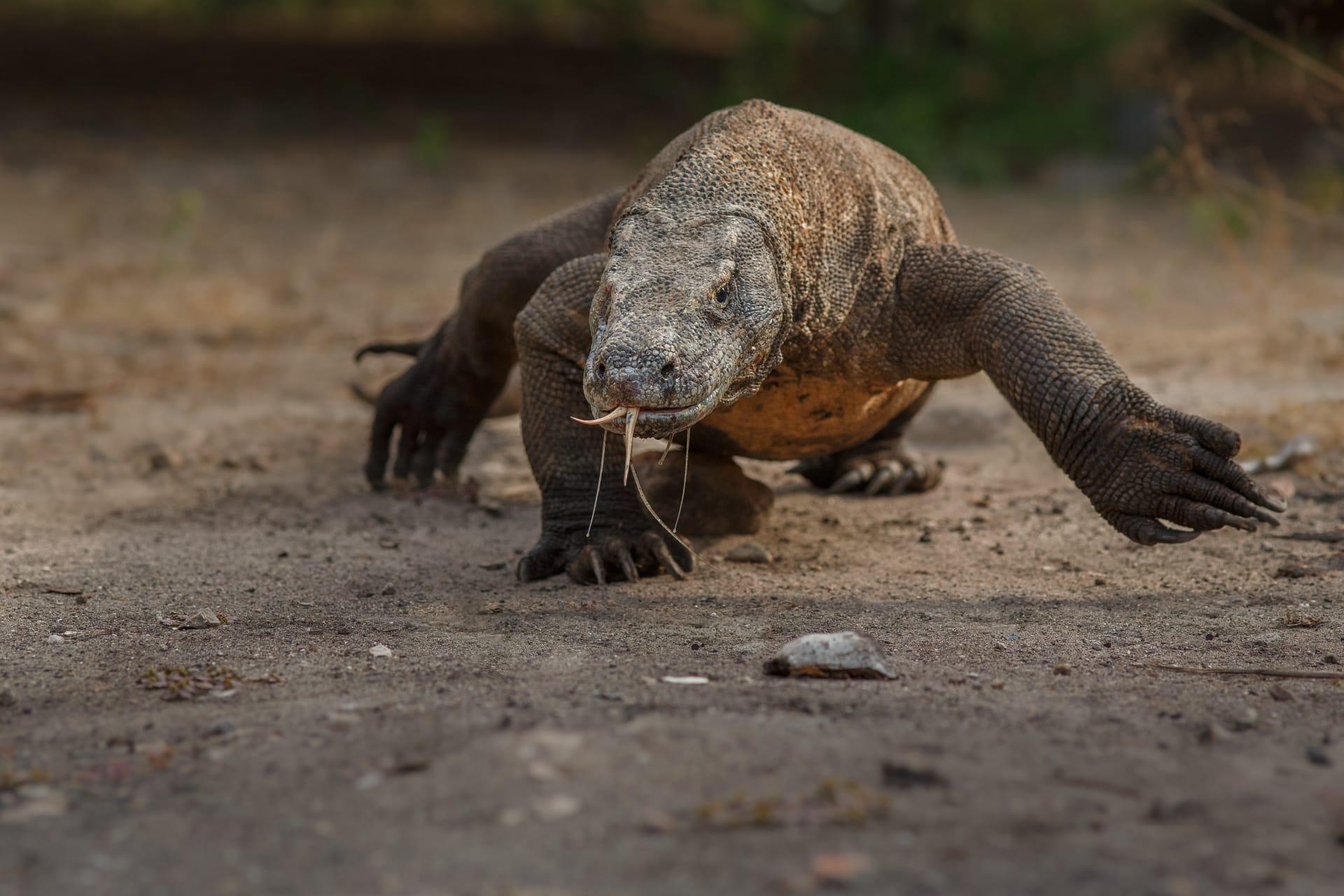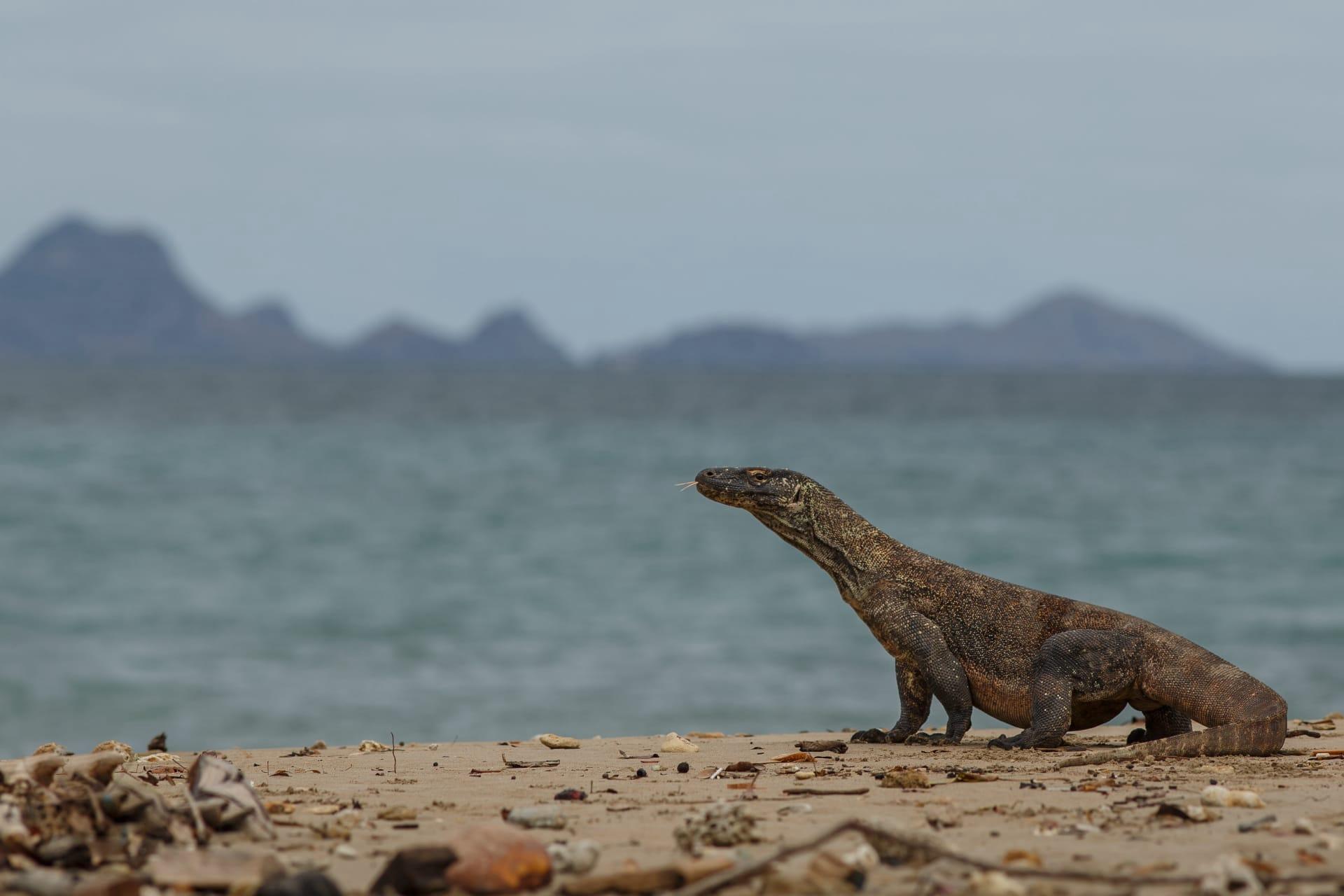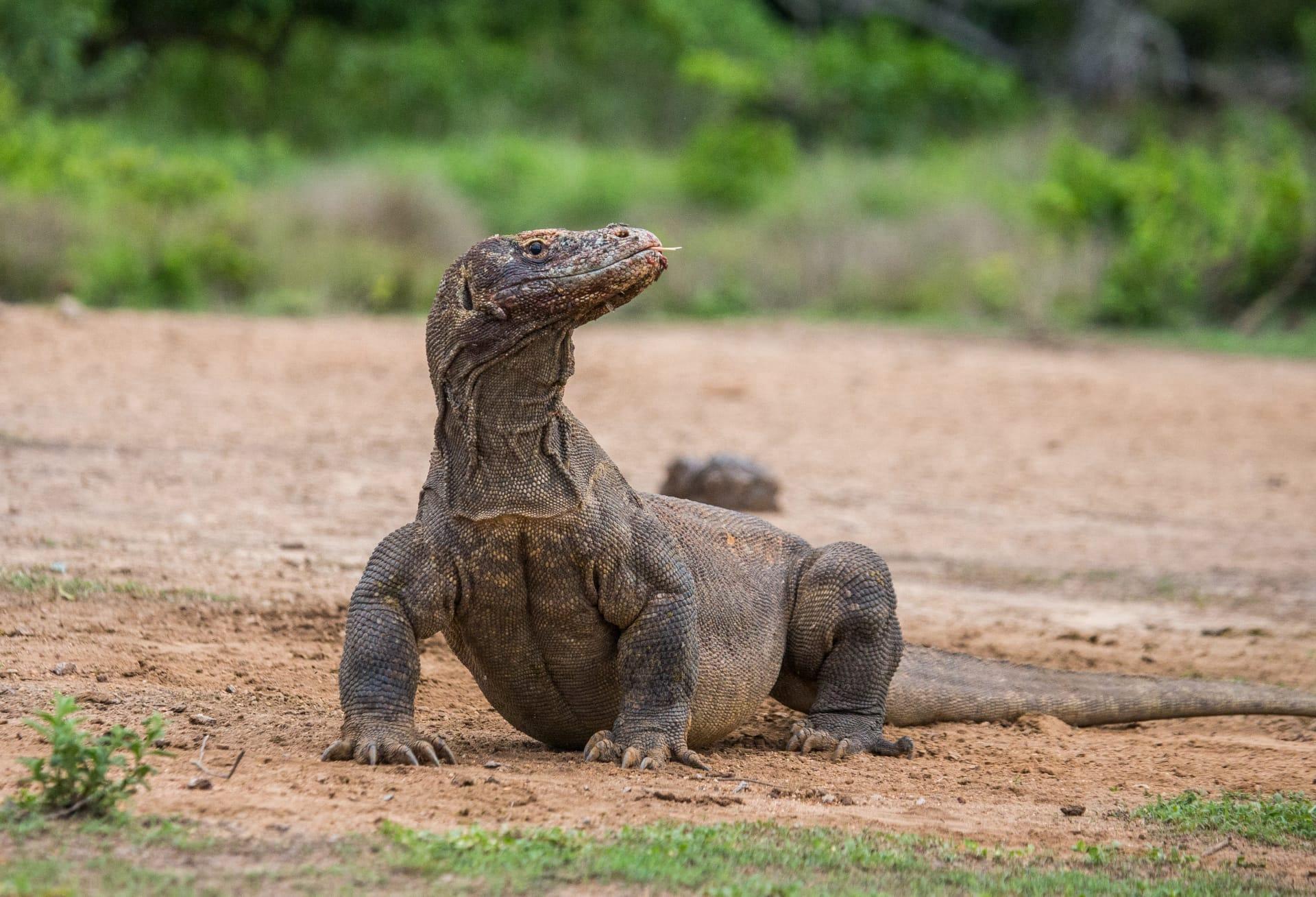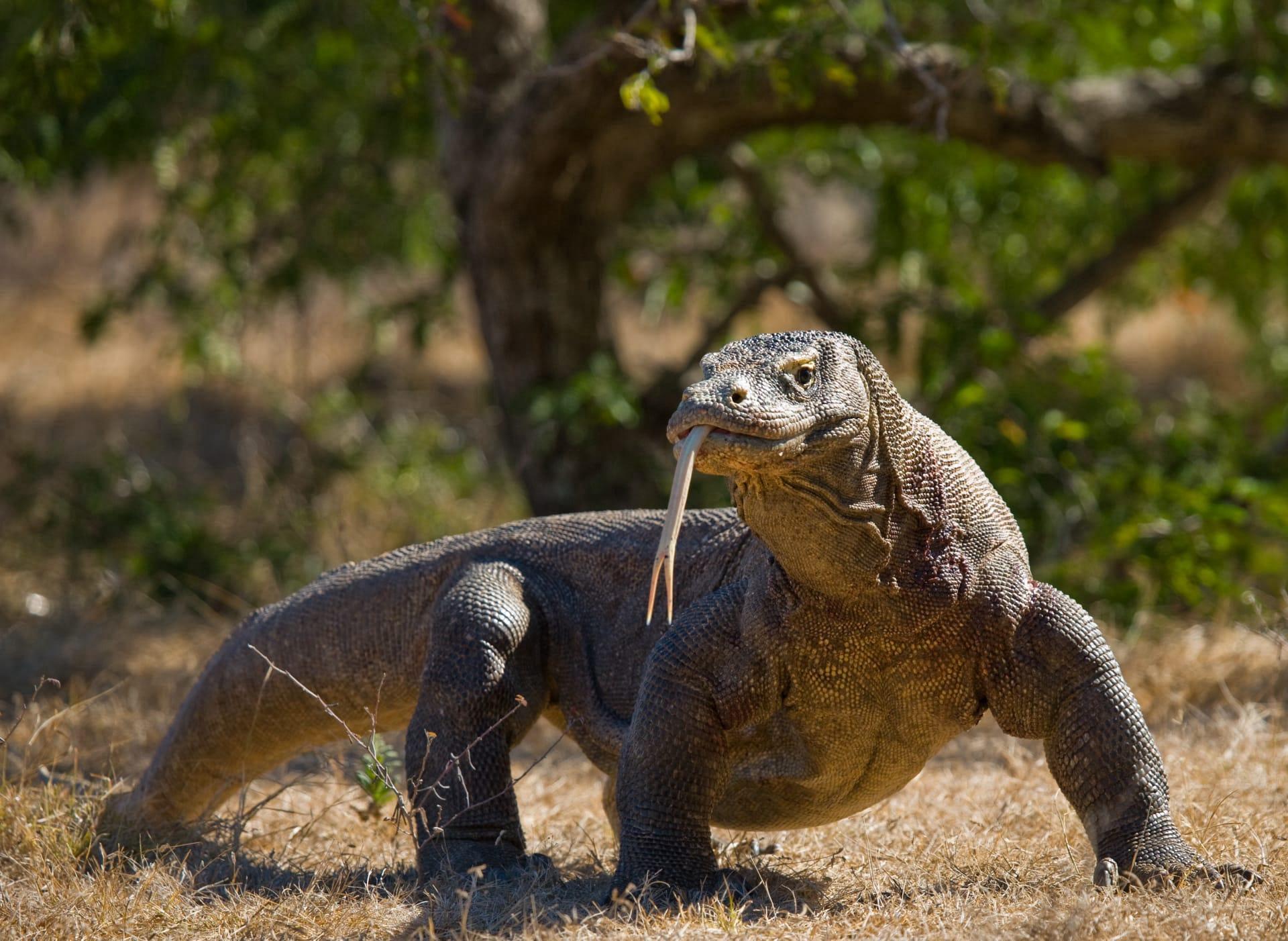Komodo Dragon
- Home /
- Mini Encyclopedia /
- Animal /
- Komodo Dragon
1
Komodo dragons, scientifically known as Varanus komodoensis, belong to the family Varanidae, which includes other large lizard species. They are classified under the order Squamata, which encompasses lizards and snakes. As the largest living species of lizard, Komodo dragons can grow up to 10 feet in length and weigh approximately 150 kilograms. These remarkable reptiles are known for their powerful physique, featuring robust limbs, a muscular tail, and a formidable set of jaws lined with sharp teeth.
Komodo dragons are endemic to Indonesia, specifically inhabiting a small group of islands in the Lesser Sunda chain. These include the islands of Komodo, Rinca, Flores, Gili Motang, and Padar. Their preferred habitats are tropical forests and open savannahs, where they have adapted to thrive in the harsh and arid conditions. The islands' hot, dry climate, coupled with limited water sources, has shaped the Komodo dragon's unique adaptations and behavior.

2
Question: Do Komodo dragons kill their prey using venom?
Answer: Contrary to popular belief, Komodo dragons do not rely primarily on venom to incapacitate their prey. Recent studies have shown that these lizards have venom glands, but their hunting strategy mainly involves a combination of their powerful bite, sharp teeth, and strong neck muscles. After biting, they follow their prey until it succumbs to blood loss or infection. The bacteria in the Komodo dragon's mouth, previously thought to be the primary cause of death in their prey, play a lesser role compared to their physical prowess and the potential presence of venom.

3
Komodo dragons have developed fascinating survival strategies. They are apex predators, meaning they are at the top of the food chain on their native islands. Their diet primarily consists of carrion, deer, pigs, and occasionally smaller dragons. Komodo dragons are ambush predators, using their camouflaged skin to blend into the environment and lying in wait to surprise their prey. They have an exceptional sense of smell, enabling them to detect carrion from several kilometers away.
Reproduction in Komodo dragons is also intriguing. They are solitary creatures, coming together only during the breeding season. Females lay about 20 eggs, which they bury in the ground or in abandoned nests of megapodes (a type of bird) for incubation. Interestingly, Komodo dragons exhibit a reproductive phenomenon known as parthenogenesis, where females can produce viable eggs without male fertilization in certain conditions, although this is less common.

4
In their ecosystems, Komodo dragons play a critical role as both top predators and scavengers. Their position at the apex of the food chain means they help control the population of herbivores like deer and pigs, which in turn influences the vegetation and overall health of their habitats. By preying on various animals, they maintain a balance in the ecosystem and prevent any single species from becoming too dominant.
Additionally, Komodo dragons contribute to their ecosystem through their scavenging behavior. By consuming carrion, they help recycle nutrients back into the environment and keep the island clean from decaying animals. This scavenging also prevents the spread of disease that could arise from rotting carcasses, indirectly benefiting other wildlife and the overall health of the ecosystem.

5
Film: "Dragons of Komodo" produced by National Geographic. Released in 1999, this film explores the harsh and fascinating world of Komodo dragons in their natural habitat. It provides an in-depth look at their behavior, hunting strategies, and the challenges they face in the wild.
Book: "The Dragon Behind the Glass: A True Story of Power, Obsession, and the World’s Most Coveted Fish" by Emily Voigt, published in the United States in 2016, offers an intriguing perspective on the world of rare animal trade, which includes a segment on Komodo dragons. The book delves into the complex relationships between humans, animals, and the environment.
Book: Another significant book is "Komodo: The Living Dragon" by Dick and Mary C. Strahl, published in 1991 in the United States. This book focuses specifically on the biology and natural history of the Komodo dragon. It provides detailed insights into their behavior, ecology, and the conservation efforts to protect these unique creatures.